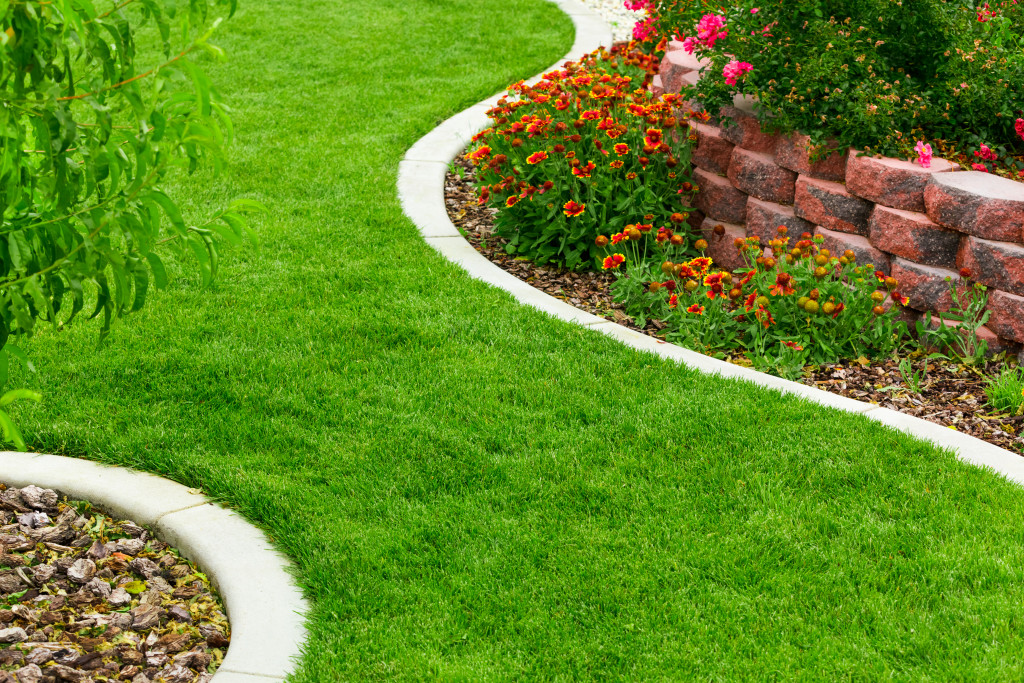- Deep, less frequent watering, early morning watering, using mulch, and adjusting watering according to plant needs are effective techniques for successful garden hydration.
- A rain gauge can optimize watering practices by providing insights into the available natural water supply.
- Different plants have varying water needs, influenced by size, growth stage, and planting conditions.
- A well-watered garden, maintained using the techniques discussed, leads to thriving plants and an overall healthier garden.
Ensuring your garden plants are properly watered is critical for their growth and health. Whether you’re a seasoned gardener or just starting, several effective and water-saving strategies must be considered. From utilizing the correct watering techniques to investing in automatic irrigation systems, you’ll be on your way to a thriving garden in no time. Explore these methods further.
Implement Proper Watering Techniques
Implementing proper watering techniques is one of the first steps to ensuring a flourishing garden. Here are some tips:
Water Deeply But Less Frequently
Watering your plants deeply but less frequently encourages the growth of deep root systems, which are key for plant resilience and longevity. Instead of shallow, frequent watering which tends to keep roots close to the surface, making plants vulnerable, deep watering promotes robust root development.
This involves soaking the soil to a depth of about 6-12 inches, ensuring water reaches the full root system. However, the watering frequency should be reduced to allow the soil to dry out partially between watering sessions. This drying process is essential as it helps prevent problems like root rot and fungal diseases often caused by overwatering. In essence, deep and infrequent watering creates a healthier and harder garden.
Water in the Early Morning
Watering your garden in the early morning is advantageous for numerous reasons. This practice reduces the evaporation and wastage of water as temperatures are typically cooler and winds less intense. It also ensures that the water has adequate time to reach the roots and be absorbed before the hotter parts of the day.
This, in turn, allows the plants to use the water optimally during the peak photosynthesis period. Additionally, if water gets on the leaves, the morning sun will quickly dry it up, minimizing the risk of fungal diseases that thrive in damp conditions.
Watering in the late evening might seem convenient, but it leaves the plants wet overnight, creating a conducive environment for fungal diseases. Therefore, early morning remains the ideal time for watering your garden.
Use Mulch

Mulching is an excellent technique to conserve water in your garden. A thick layer of organic mulch around your plants, such as straw, compost, or shredded bark, can drastically decrease the amount of water lost through evaporation. Mulch acts as an insulation barrier, keeping the soil cool and moist for longer.
Additionally, it prevents weed growth that competes with your plants for water. Over time, organic mulches will break down and enrich the soil, improving its structure and water-holding capacity. Remember to maintain approximately 2-3 inches of mulch in your garden beds. However, avoid piling it against plant stems to prevent rot and pest problems. Incorporating mulching into your watering regimen will conserve water and boost your garden’s overall health.
Water According to Plant Needs

Recognizing that not all plants require the same amount of water is crucial for efficient garden maintenance. Different species have varying water needs, influenced by their size, growth stage, and whether they are planted in the ground or pots. For instance, newly planted seedlings and established plants will have different watering requirements.
It’s also important to realize that certain plants can tolerate dry conditions better than others. Succulents and other drought-tolerant plants require less frequent watering, while others, like vegetables and most annuals, need regular watering to thrive.
For optimal plant health, it is generally recommended to water thoroughly once the top inch of soil has dried out. Overwatering can lead to root rot and other diseases, so it’s crucial to balance the watering frequency with the specific needs of each plant in your garden.
Invest in a Rain Gauge
A rain gauge is invaluable for gardeners seeking to optimize their watering practices. It measures the amount of rainfall, providing insights into the natural water supply available to your garden. By utilizing a rain gauge, you can adjust your watering schedule based on the rainfall received, reducing unnecessary water usage and saving on your water bill.
Moreover, overwatering can lead to many plant diseases, so understanding your garden’s natural water intake can help prevent these issues. Furthermore, it can guide you in making informed decisions about the types of plants to grow, as some plants thrive in wetter conditions, while others prefer drier climates. Simple to install and easy to read, a rain gauge is a cost-effective and straightforward way to improve your watering efficiency.
Utilize a High-Quality Garden Watering System
Investing in a high-quality garden watering system can significantly enhance your gardening efficiency. This can range from simple drip irrigation systems to more advanced solutions like automatic timers or smart sprinklers. Drip irrigation systems, for instance, deliver water directly to the plant roots, reducing water waste through evaporation or runoff.
Automatic timers can water your garden at optimal times, such as early morning, ensuring consistency while saving you time. Smart sprinklers, on the other hand, can adjust watering schedules based on weather data, preventing overwatering on rainy days. Although the initial cost may be higher, these systems can save you time and money in the long run.
They also promote sustainable water usage, which is crucial in today’s changing climate. Ultimately, the best system for you will depend on your garden’s size, type of plants, and your personal preferences and budget.
In conclusion, ensuring your garden gets the right water is crucial to gardening. You’re well-equipped to maintain a flourishing garden with the strategies discussed in this article. So, get out there and start applying these techniques today. Remember, a well-watered garden is a thriving garden!

